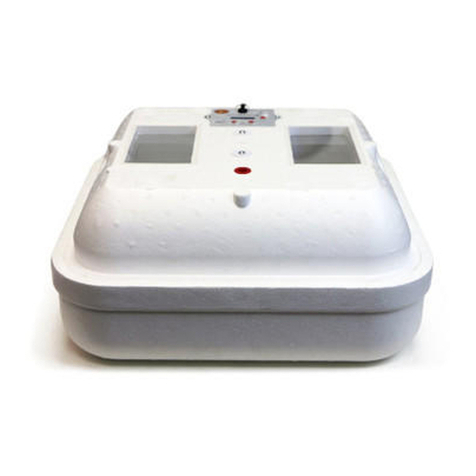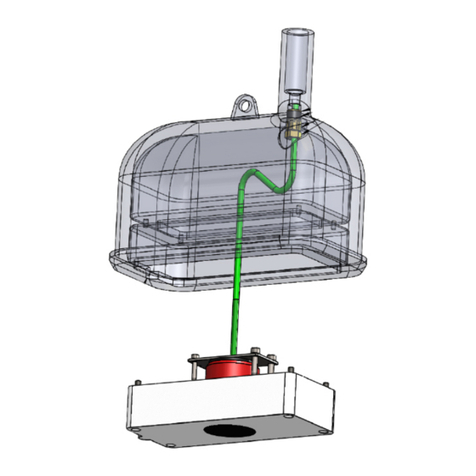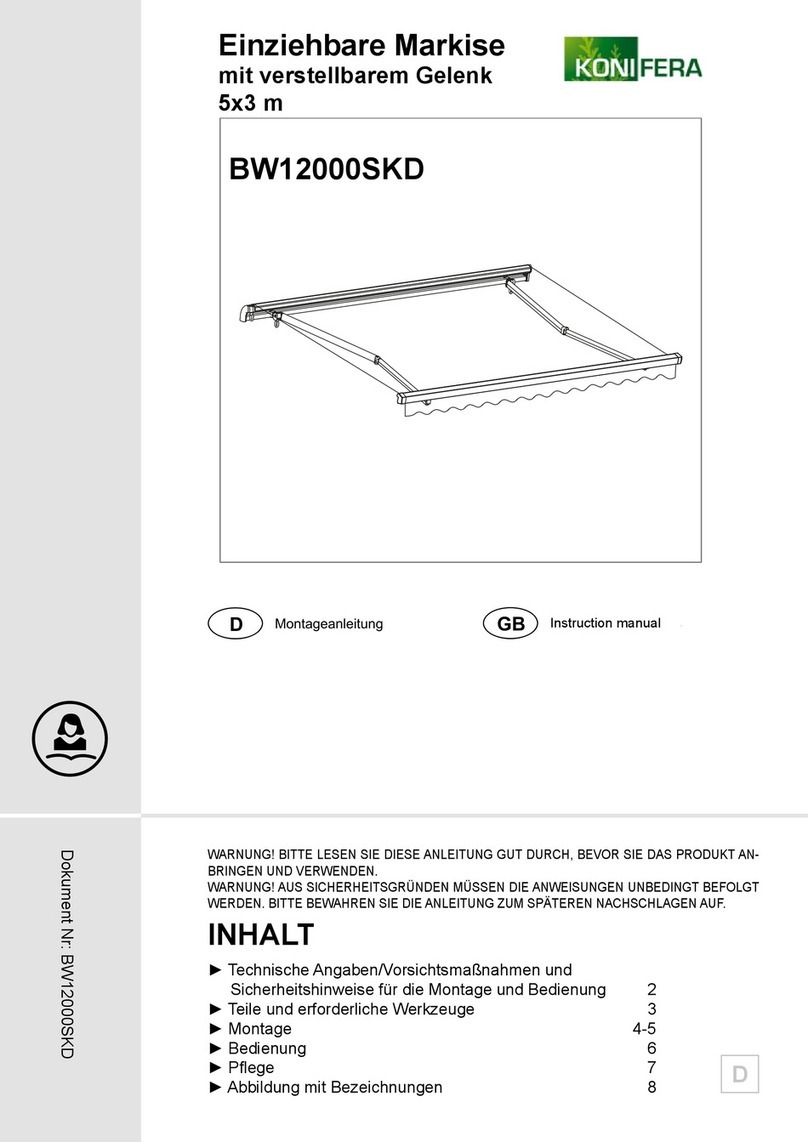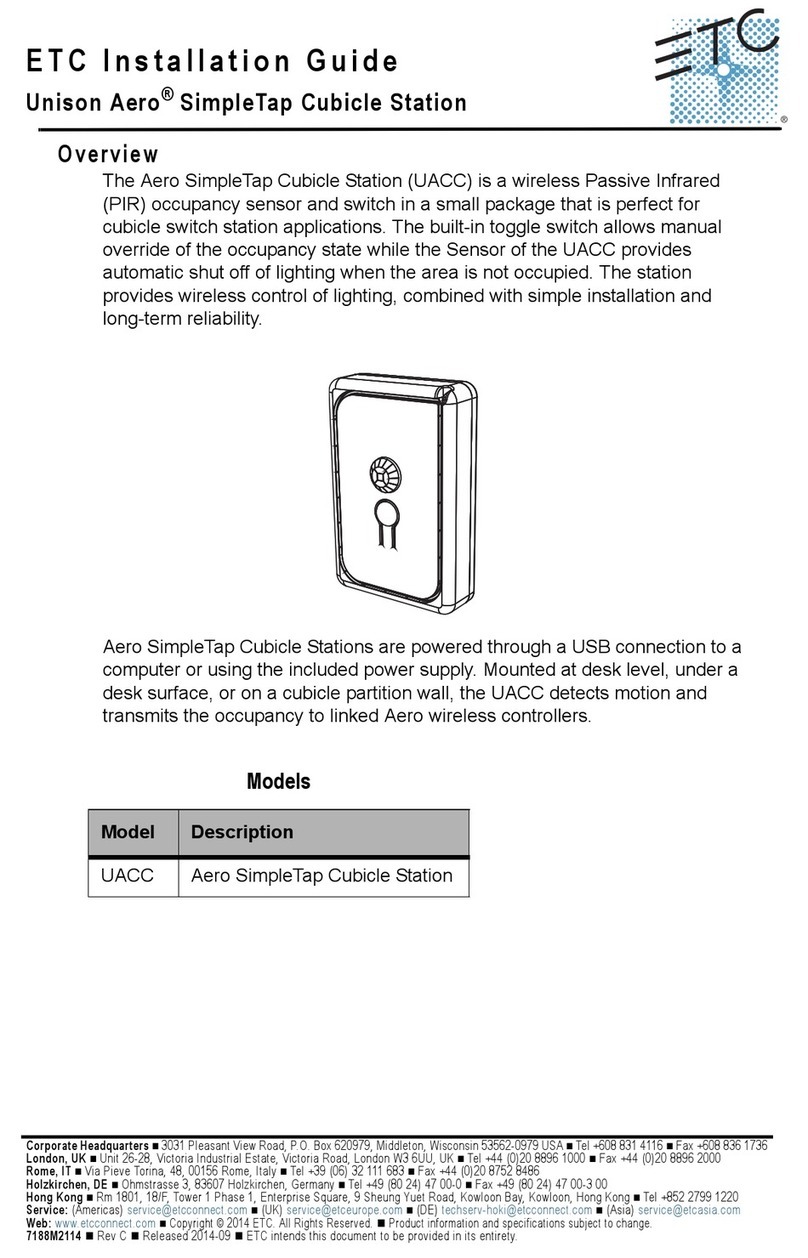GQF 1588 HOVA-BATOR User manual

MODEL 1588 HOVABATOR
PARTS Unpack the incubator from box. Check
for the components listed below.
1588 Top with heat
element, fan, pilot
light, thermostat, &
vent plugs installed.
Hova-Bator Bottom
Plastic Liner
Power Supply
THE GENESIS
POOR HATCH
There are many factors involved with the hatching process and any one can hamper or stop chick development. Old eggs, infertile eggs, damaged
or dirty eggs, poor ock health, and eggs not properly turned during incubation are some of the factors. Some chicks may only partially emerge
from the shell. These chicks after time may be assisted out of the shell but due to their weak condition often do not survive. It is not unusual in a
large batch of eggs to have a few of these even with good hatches.
Check the unhatched eggs. Take note of the exact number of days it took to hatch any eggs (counting the day they were set as day one) or
note the number of days for any eggs to pip the shell. Check unhatched eggs for chick development and note the number of these eggs in the
batch. If all or most of the eggs have no development (clear inside) then the microscopic embryo had died before or at time of incubation or the egg
was never fertile. If over 70% of the developed eggs hatched then there is little adjustment that can be done with humidity or temperature
to improve this. If many of the unhatched eggs are developed or partially developed into chicks and if eggs were of good quality and properly
handled then perhaps adjustments in temperature or humidity may be required.
If eggs hatched on time, then begin any adjustments with the humidity rst. Review the section under MOISTURE for adjustments. Make only
one adjustment and then test it on a setting of eggs before making any other adjustments.
If eggs have been determined to hatch late or pip late (one day or more), rst check for too much humidity then look for too low of a temperature
setting. If eggs pip or hatch early (one day or more) then look for too high of a temperature. Eggs hatching early or late due to temperature are
probably within one degree of the proper temperature setting.
LIMITED WARRANTY
GQF Manufacturing Co., Inc. guarantees against defect for a period of 1 year from date of purchase. This warrantee is void for product more than 3 years old when not
sold direct from GQF to the consumer. Notify GQF Mfg. Co. of any defective items, giving catalogue number and name of item and what is wrong with item. Send copy
of invoice showing date of purchase. GQF Mfg. Co. will send replacement, or replacement parts, or notify regarding return. Shipping charges for express shipping or
shipments outside of the continental USA are to be paid by the customer. Product being used outside of the continental USA may need to be returned to GQF at user’s
expense for warrantee work. Returning of items without written permission will be at owner’s expense.
Whereas GQF Mfg. Co. has no control over usage of equipment and product supplied, it assumes no responsibility for losses or damage from the equipment or product
other than replacement of defective parts. No guarantee on hatchability of eggs. GQF assumes no responsibility for losses due to shipping damage, late shipment or
arrival of product.
Do not expose electrical parts to water. Installation of electrical parts should be done by a qualied electrician. Use of replacement parts other than intended by GQF Mfg.
Co. is not permitted. GQF not responsible if product does not comply with local product codes or codes outside of the USA.
* % Weight loss: Total weight loss from beginning to end of Incubation should be 12%-16%.
% Weight Loss = Original wt. - Present wt.
Original wt.
Average Daily Wt. = Original wt. X .14 (Based on 14% total loss)
Loss Required Incubation Period
INCUBATION PERIODS FOR SEVERAL SPECIES OF BIRDS
Pheasant Peafowl Chicken,
Bantam
23-24 17 42-48 43-50 35-40 28 35-37 28-34 28 23-28 28-30 21 28 23-24 25 17
Requirements
Incubation period (days)
Ostrich Emu Rheas Duck
Bobwhite
Quail
Cotumix
Quail
Muscovy
Duck
Goose Guinea Turkey Chukar
Partridge
Grouse Pigeon
For help or comments contact our technical support at:
Ph 912-236-0651 / Fax 912-234-9978 / e-mail: sales@GQFmfg.com or mail to:
IF THE EQUIPMENT IS USED IN A MANNER NOT SPECIFIED BY
THE MANUFACTURER, THE PROTECTION PROVIDED BY THE
EQUIPMENT MAY BE IMPAIRED.
INPUT: AC 100-240V 50/60 Hz 1.5A OUTPUT: 12V 3000mA
GQF Manufacturing Co., Inc.
PO Box 1552
Savannah, GA 31402-1552
1.4.1 Normal environmental conditions - This equipment designed to be safeat least under the following conditions: a) indoor use; b) altitude up to 2000m; c) temperature 5oC to 40oC; d) maximum
relative humidity 80% for temperatures up to 31oC decreasing linearly to 50% relative humidity at 40oC; e) mains supply voltage uctuations up to +10% of the nominal voltage; f) transient overvoltages
typically present on the mains supply (impulse withstand category II 1500 V transient; g) pollution degree 2.
TUV Listed P/N H1588
SETUP
Incubator Floor
Notch
Unpack the incubator from the box
and remove the top half from the
bottom.
Place liner in Hova-Bator
bottom, and arrange as shown using
the water troughs and turner power
cord notch as reference. Place the
plastic Incubator Floor on top of the
liner.
In most climates, ll trough #1
(highlighted in yellow) with water.
Surface area, not depth, determines
humidity; rell trough as necessary
to prevent it from drying out.
NOTICE: Humidity troughs should
be filled with cool tap water.
Careful to avoid spilling excess
water outside of trough as it will eect humidity. Humidity should be between 45
and 55% for SETTING and 55 to 65% for HATCHING. Humidity above 65% is not
recommended as it may cause condensation to form on the windows and can
decrease hatch percentage.
Plug the thin power cord from the incubator’s top into the power supply. Plug
the cord set for the power supply into the appropriate wall socket. The fan should
then run and the small heat indicator light on the thermostat box should be lit.
Allow the incubator to warm up for one hour. When the light begins blinking
regularly, the incubator is nearing its set point.
1588 Genesis TUV 2020 11X17.indd 1 10/7/2020 10:36:24 AM

OPERATION
Warm eggs to room temperature (70°F. to 75°F.) and place
them on the incubator oor. Let them lay in a natural
manner, which is on their sides with the small end slightly
down. Turn eggs 2 to 3 times a day. With a pencil, mark
an X on one side and an O on the opposite side of the
egg. Turn all eggs so that X’s appear face up. Next turning
period turn all O’s face up. Alternate this routine each
turning until 3 days before eggs are due to hatch.
& HAND TURNING EGGS
NOTE: It is recommended that you
operate the incubator with a small
quantity of inexpensive eggs to be
assured of your operating procedure
and the performance of the incubator,
before attempting to hatch large
quantities of eggs or expensive eggs.
Keep Reptile eggs protected from
moving air. (See Warranty on Page 4).
TEMPERATURE
An Incubator is designed to bring normal room temperature to the desired temperature. Room temperture of 60°F. or below will reduce
the temperature in the incubator. Room temperature change of 10°F. or more will change temperature in incubator & is more pronounced
below a temperature of 70°F. The location of the machine is important to successful operation. A room temperature from 70° to 80°F. is
ideal, and fresh air without drafts is necessary. Be sure no direct sunlight strikes the incubator and that it sets level. A consistant room
temperature within a few degrees is best.
The incubator is pre-set at 100 degrees Fahrenheit. For most bird eggs, a temperature range between 99.5 – 100 degrees F. is
recommended. Because the eggs, incubator, and water are cold, the incubator may be slow to reach the set temperature and may
take several hours to reach 100 degrees F.
Change Temperature Setting
If after completing one or two hatches you feel it necessary to slightly change the temperature, press the (+) or (-) button once. The
temperature will begin to ash. Then press and hold the button to change the SET TEMP as desired. Allow approximately 30 minutes
for the incubator to regulate the temperature.
Switch between Fahrenheit & Centigrade
While the 1588 is on, Press and hold the (+) button for three seconds to change between Fahrenheit and Centigrade.
Day Counter - Reset
While the 1588 is on, Press and Hold (both) temperature buttons for three seconds to reset the day counter.
The Day Counter is a guide to help you keep track of how many days the eggs have been incubating. It is an approximation. The day
counter only works while the incubator is on. On the day you set your eggs, re-set the Day Counter to Day 1.
LOCATION
The purpose of supplying moisture in
and incubator is to prevent excessive
drying of the natural moisture from
within the eggs. The correct amount
of humidity can be determined by the
size of the air sack when candled, or
by weighing the egg to gauge percent
of weight loss. Both methods require
knowledge and experience that rst time
operators usually do not have. The Hova-
Bator is designed for simplicity in this
matter, and works well for most species.
MOISTURE
VENT PLUG
A red vent plug is located on the top of the
incubator. This should be removed when the
incubator is used at altitudes greater than 6000
feet above sea level. The plug may also be
removed during or after the hatch if water drops
appear on the window due to high humidity. This
will help to dry the chicks and the incubator. If
removing the plug does not reduce the humidity
enough, it may be necessary to prop up the
top slightly, to facilitate drying. If so, be sure
to maintain proper temperature. Alternately,
the top may be removed quickly, and moisture
wiped from the windows to aid drying. Replace
the plug after chicks are removed.
Chicks may be removed 24 hours after they start to hatch.
Extremely wet chicks should be left in incubator to dry. If
they don’t dry in eight or more hours, remove them to a
brooder or heat lamp, with temperatures of 95oF to 100oF
Plan to remove chicks once a day, as every time incubator
is opened, warm moist air escapes. Avoid chilling of wet
chicks. Some chicks may be late in hatching, so you can
leave remaining unhatched eggs up to 2 days longer.
Clean your incubator after the hatch with soap and water
only. The plastic liner for the Hova-Bator bottom can be
cleaned using detergents or disinfectants.
When chicks are removed
from the incubator they must
have a place that is warm and
dry. A brooder should have
one section that is heated,
with a temperature of 100
degrees (for the rst week)
and an unheated section
for exercise. Food and water should be partially in heated area.
Temperature should be reduced 5 degrees each week until it is
down to 70 degrees. Some types of chicks need a temperature
around 70 degrees until they are nearly grown.
The incubator top is not satisfactory as a brooder, as there is not
sucient heat and the chicks may peck it to pieces. Feed and
water chicks at once. Check with a local feed dealer for the proper
feed for type of chicks you have hatched.
AFTER HATCH
BROODING
Great
Hatch Recipe
- Do not bother the thermostat unless it
is absolutely necessary. The working
of the machine may be affected if the
thermostat is tampered with excessively.
- Do not over crowd the eggs.
- Keep the eggs clean. Perspiration from
the hands or any sort of grease is
injurous because it stops up the pores of
the shells.
- After each temperature adjustment, allow
ample time for temperature to stabilize.
-Avoid opening the lid during hatch.
Hatching
Time
Chicken—21 days.
Quail—23 days.
Cortunix—17 to 18
Pheasant—23 days.
Chukar—23 days.
Turkey—28 days.
Swan—30 to 37 days.
Goose—28 to 30 days.
Duck—28 to 33 days.
Parakeet— 18 days.
Parrots—28 days.
Dove—14 days.
Mynah—14 days.
Finch—14 days.
Button Quail—16 days.
Valley Quail—21 to 22 days.
Add water every few days to trough #1 only. Usually twice weekly is sucient. The amount
of moisture in the incubator is determined by the surface area of water. Under high humidity
conditions and for some types of eggs, less humidity is required. Humidity may be reduced
by covering over a portion of a trough with aluminum foil or switching to one of the smaller
troughs. Humidity for eggs has a broad range, but if there are doubts about humidity, less is usually
better than more, except for the last 2 days. 2 to 3 days before the hatch, stop turning the eggs,
and ll both trough #1 and #2 with water.
PIace top on the incubator and do not remove until hatch is complete*. Remove dry chicks as
soon as possible to a brooder that has food and water and temperatures of about 95oF to 100oF.
Chicks can survive up to 48 hours after hatch without food or water, but feed and water them as
soon as possible to avoid stress. Some cases may require moving chicks to brooder to dry.
The liner tray has 4 troughs to allow more options for humidity. Trough 1 is the largest and trough
4 is the smallest. IN MOST CLIMATES USE #1 FOR SETTING AND BOTH #1 and #2 DURING THE
HATCH PERIOD.
In HIGH humidity climates it may be necessary to use smaller troughs for setting and hatching.
For instance #2 for setting then #2 and #3 at the end of the hatch.
In extreme LOW humidity climates a combination of troughs may be used to reach the desired
setting. Filling troughs #1 and #4 during the setting period for example.
In testing, when trough #1 was lled completely it lasted 3 days before needing relling (room
humidity at 40%).
* After hatch pull red vent plugs to help dry chicks.
HUMIDITY & HATCHING
Set up incubator as shown on page 1. If you are using the automatic egg
turner, place it on the oor in the bottom of the incubator. The turner motor
uses metal gears for additional strength when turning heavy loads. These
gears can emit noise during normal operation.
Three days before eggs are to hatch remove eggs from turner, lay them on their
side on the oor in their natural unsupported position. Add water according
to instructions. Do not attemp to hatch eggs while turner is in the incubator
as the slow turning motor could crush the chicks.When turner is removed for
hatching, maintain temperature by placing thermometer on top of eggs.
The turner operates very slowly. You should not expect to see movement
upon installation. Proper operation is detected by noting rack angle over time.
AUTOMATIC TURNER
1
2
3
4
Place Turner so power
cord exits through notch
in corner
Water can be
lled through
gap without
moving turner
1588 Genesis TUV 2020 11X17.indd 2 10/7/2020 10:36:31 AM
Other GQF Accessories manuals
Popular Accessories manuals by other brands
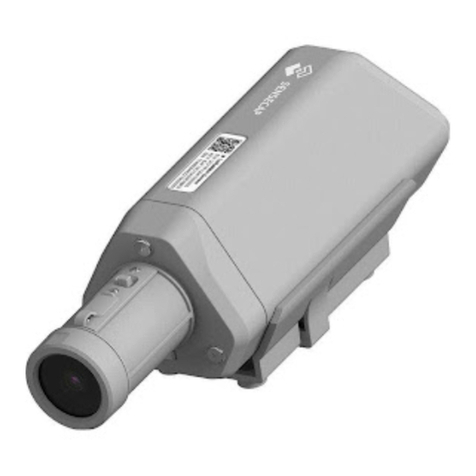
SENSECAP
SENSECAP A1101 user guide
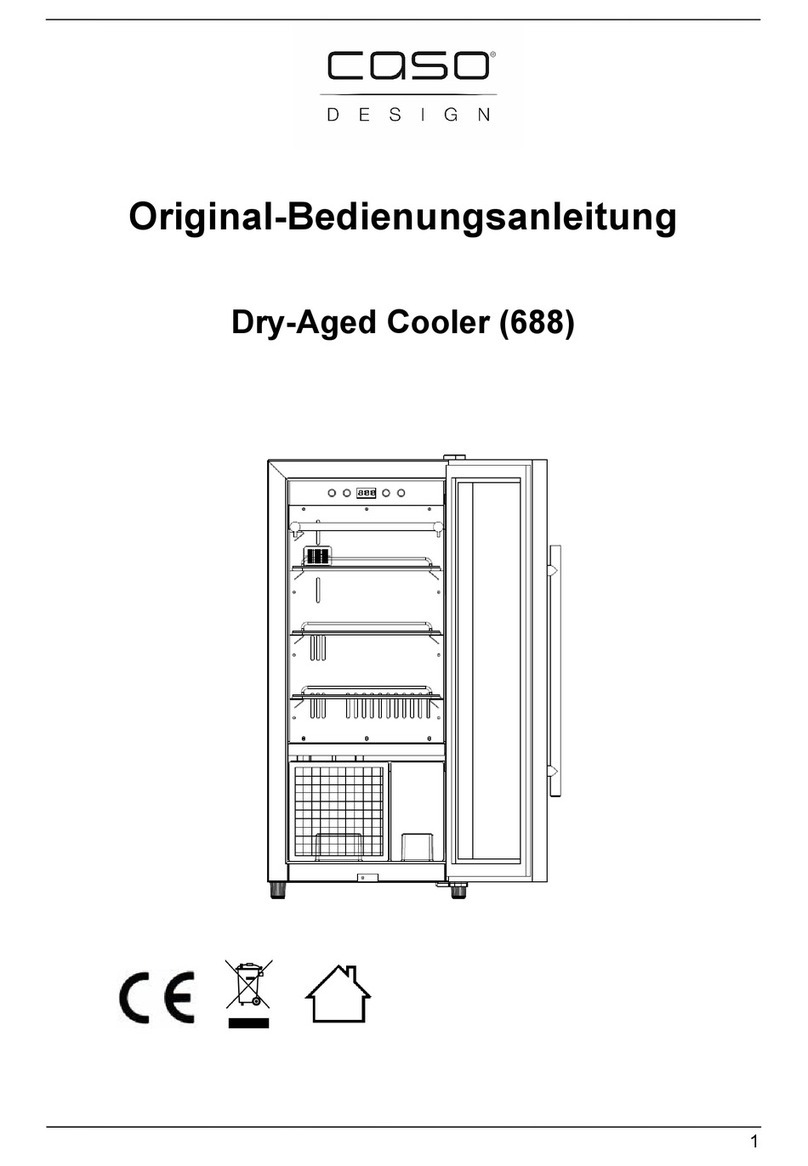
CASO DESIGN
CASO DESIGN Dry-Aged Cooler 688 Original operating manual
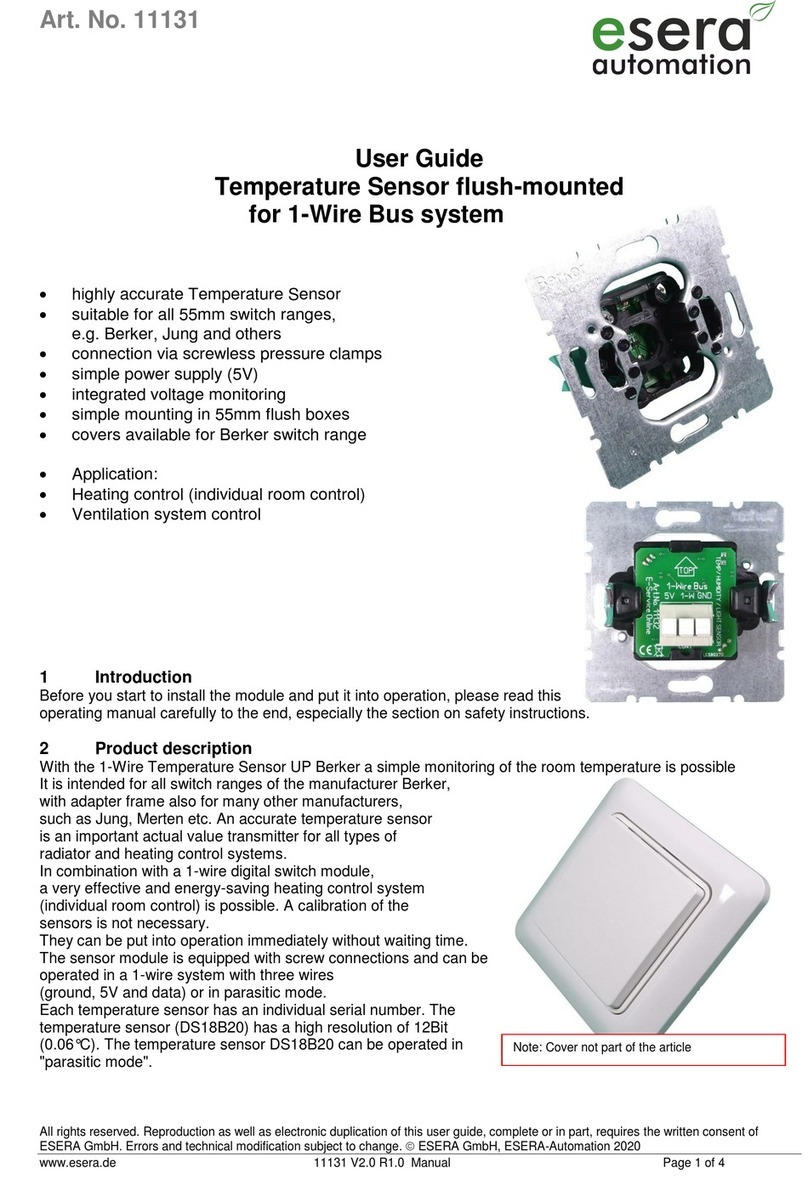
esera
esera 11131 user guide
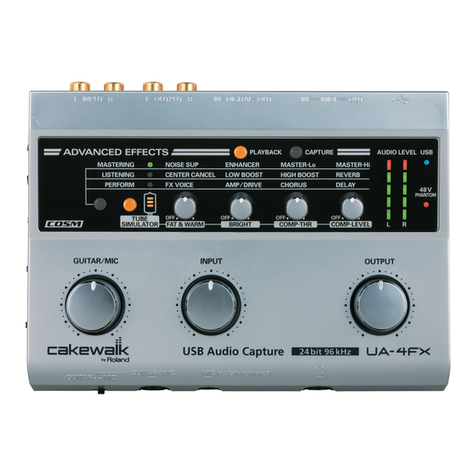
Edirol
Edirol UA-4FX Read this first

PCB Piezotronics
PCB Piezotronics M105C12/003G10 Installation and operating manual
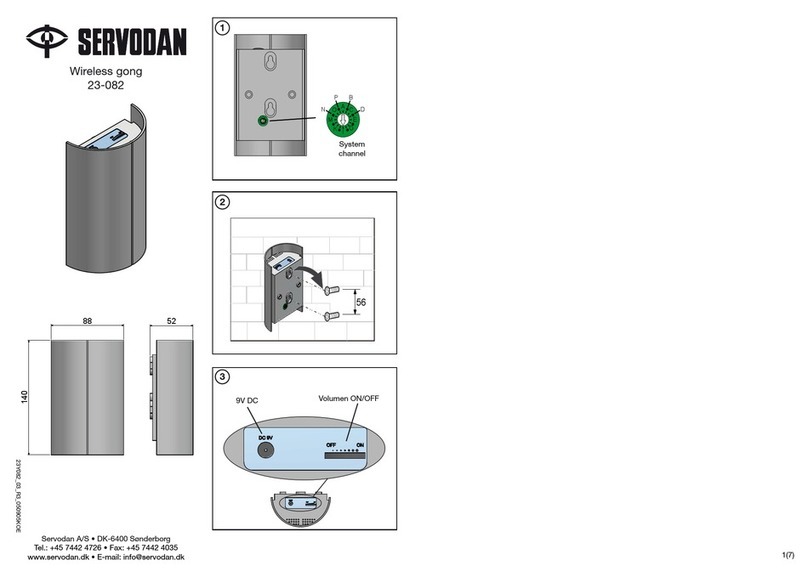
Servodan
Servodan 23-082 Fitting and operating instructions

Homelite
Homelite PS19399 instruction sheet
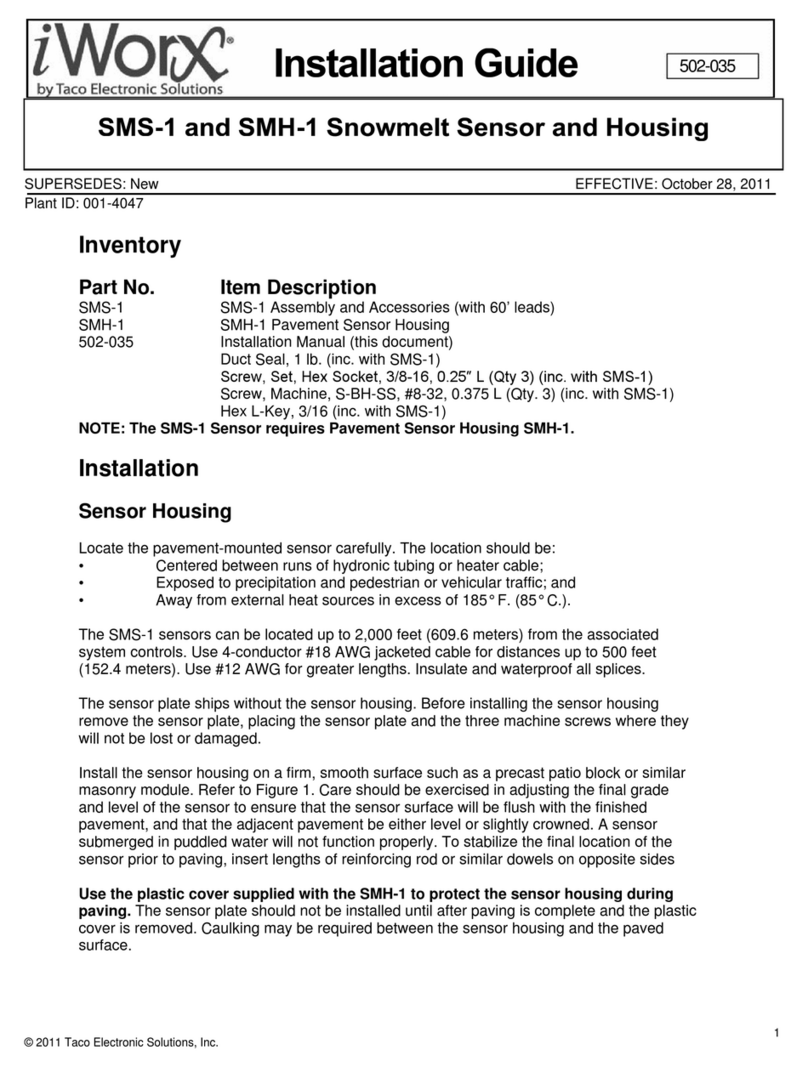
Taco Electronic Solutions
Taco Electronic Solutions iWorX SMS-1 installation guide
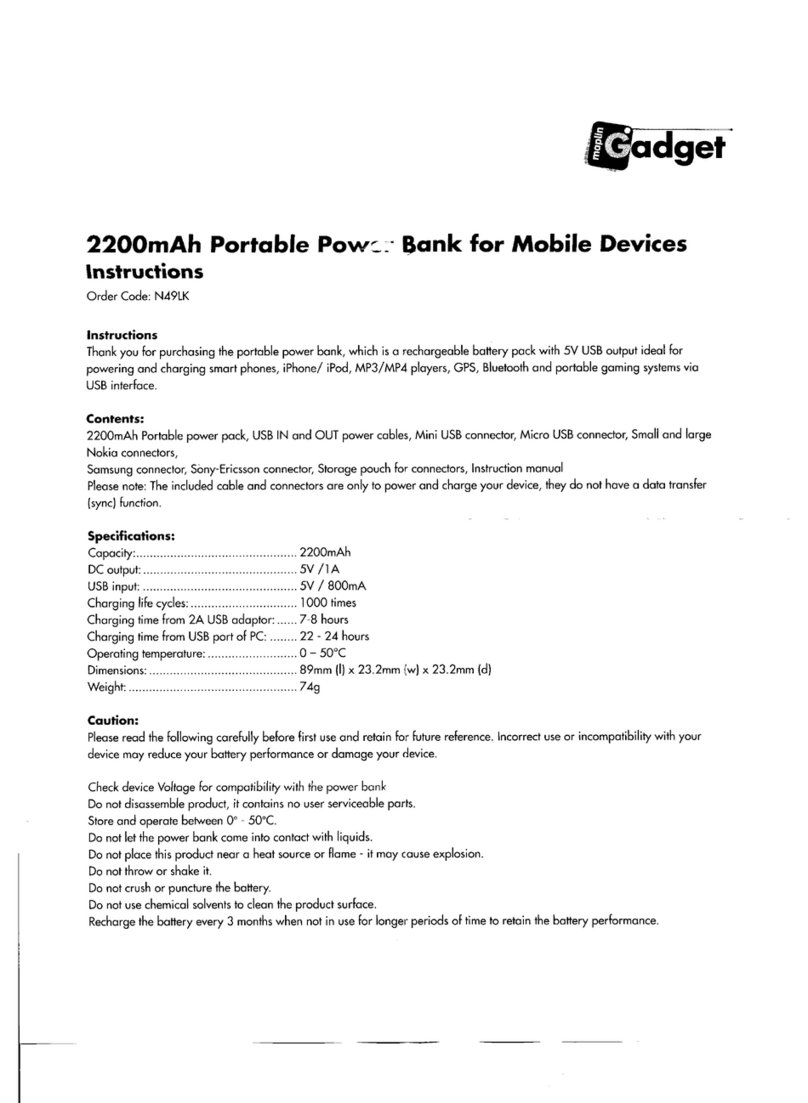
Maplin
Maplin N49LK instructions

Wetekom
Wetekom 26 58 50 Original instructions

STEINEL PROFESSIONAL
STEINEL PROFESSIONAL IS 3360 MX DALI instructions
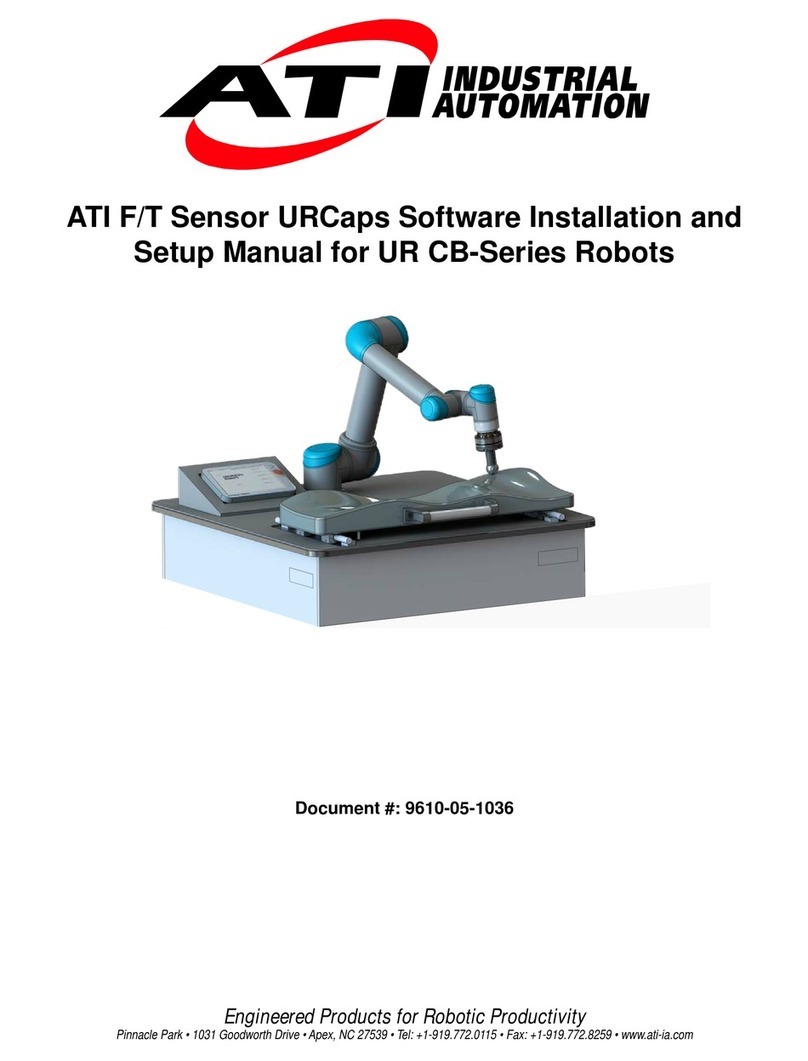
ATI Technologies
ATI Technologies Wireless F/T Software Installation and Setup Manual
